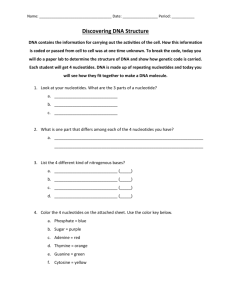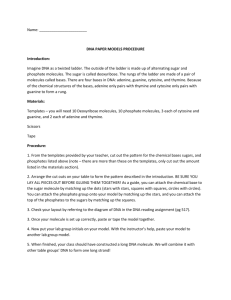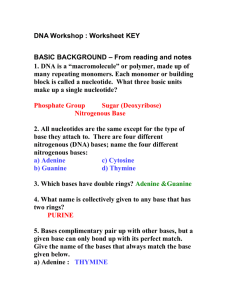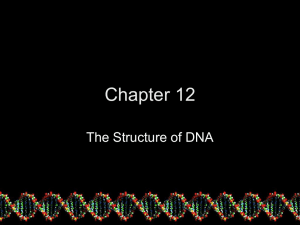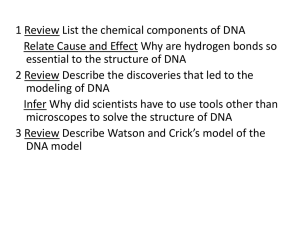NAME: Modeling DNA Replication Introduction During DNA
advertisement
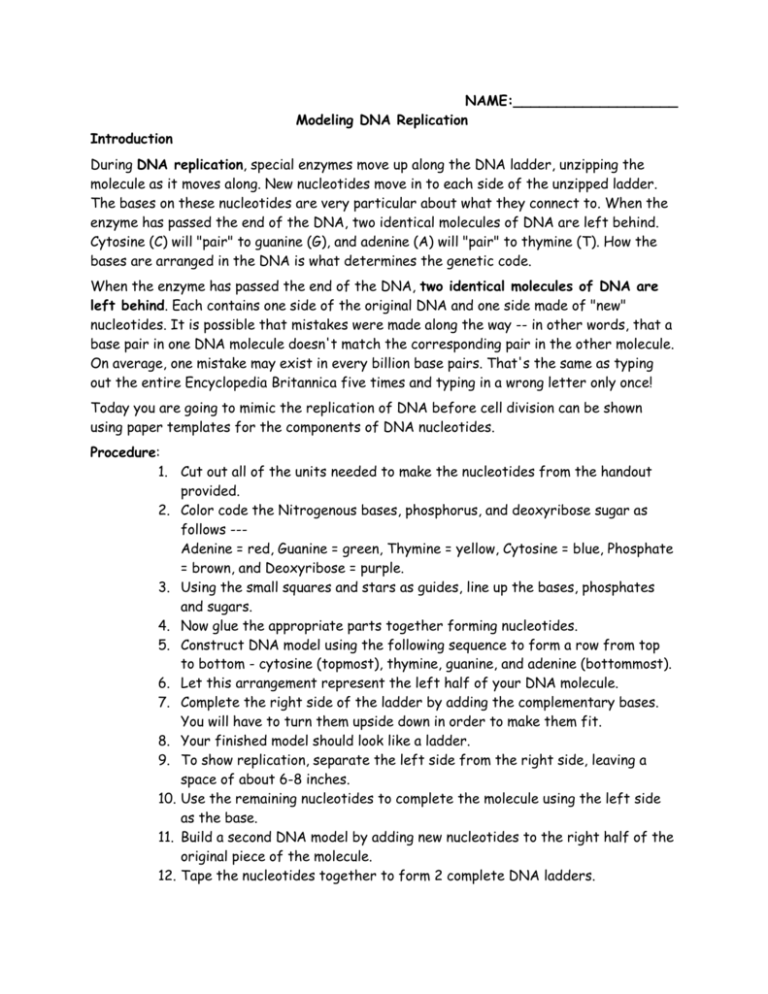
NAME:___________________ Modeling DNA Replication Introduction During DNA replication, special enzymes move up along the DNA ladder, unzipping the molecule as it moves along. New nucleotides move in to each side of the unzipped ladder. The bases on these nucleotides are very particular about what they connect to. When the enzyme has passed the end of the DNA, two identical molecules of DNA are left behind. Cytosine (C) will "pair" to guanine (G), and adenine (A) will "pair" to thymine (T). How the bases are arranged in the DNA is what determines the genetic code. When the enzyme has passed the end of the DNA, two identical molecules of DNA are left behind. Each contains one side of the original DNA and one side made of "new" nucleotides. It is possible that mistakes were made along the way -- in other words, that a base pair in one DNA molecule doesn't match the corresponding pair in the other molecule. On average, one mistake may exist in every billion base pairs. That's the same as typing out the entire Encyclopedia Britannica five times and typing in a wrong letter only once! Today you are going to mimic the replication of DNA before cell division can be shown using paper templates for the components of DNA nucleotides. Procedure: 1. Cut out all of the units needed to make the nucleotides from the handout provided. 2. Color code the Nitrogenous bases, phosphorus, and deoxyribose sugar as follows --Adenine = red, Guanine = green, Thymine = yellow, Cytosine = blue, Phosphate = brown, and Deoxyribose = purple. 3. Using the small squares and stars as guides, line up the bases, phosphates and sugars. 4. Now glue the appropriate parts together forming nucleotides. 5. Construct DNA model using the following sequence to form a row from top to bottom - cytosine (topmost), thymine, guanine, and adenine (bottommost). 6. Let this arrangement represent the left half of your DNA molecule. 7. Complete the right side of the ladder by adding the complementary bases. You will have to turn them upside down in order to make them fit. 8. Your finished model should look like a ladder. 9. To show replication, separate the left side from the right side, leaving a space of about 6-8 inches. 10. Use the remaining nucleotides to complete the molecule using the left side as the base. 11. Build a second DNA model by adding new nucleotides to the right half of the original piece of the molecule. 12. Tape the nucleotides together to form 2 complete DNA ladders. Questions 1. Of the 4 bases, which other base does adenine most closely resemble? 2. List the 4 different nucleotides. 3. Which 2 molecules of a nucleotide form the sides of a DNA ladder? 4. If 30% of a DNA molecule is Adenine, what percent is Cytosine? 5. What does the term replication mean? 6. What is another name for adenine and three phosphate molecules attached to it? 7. What is the name for this type of replication? 8. Explain why that name is very fitting for this type of replication. 9. Explain why this type of replication can occur? 10. What is used to cut the strand of DNA? 11. Where is the DNA cut? 12. Turn in your questions, and your two DNA molecules with your group’s names on the back of each.

